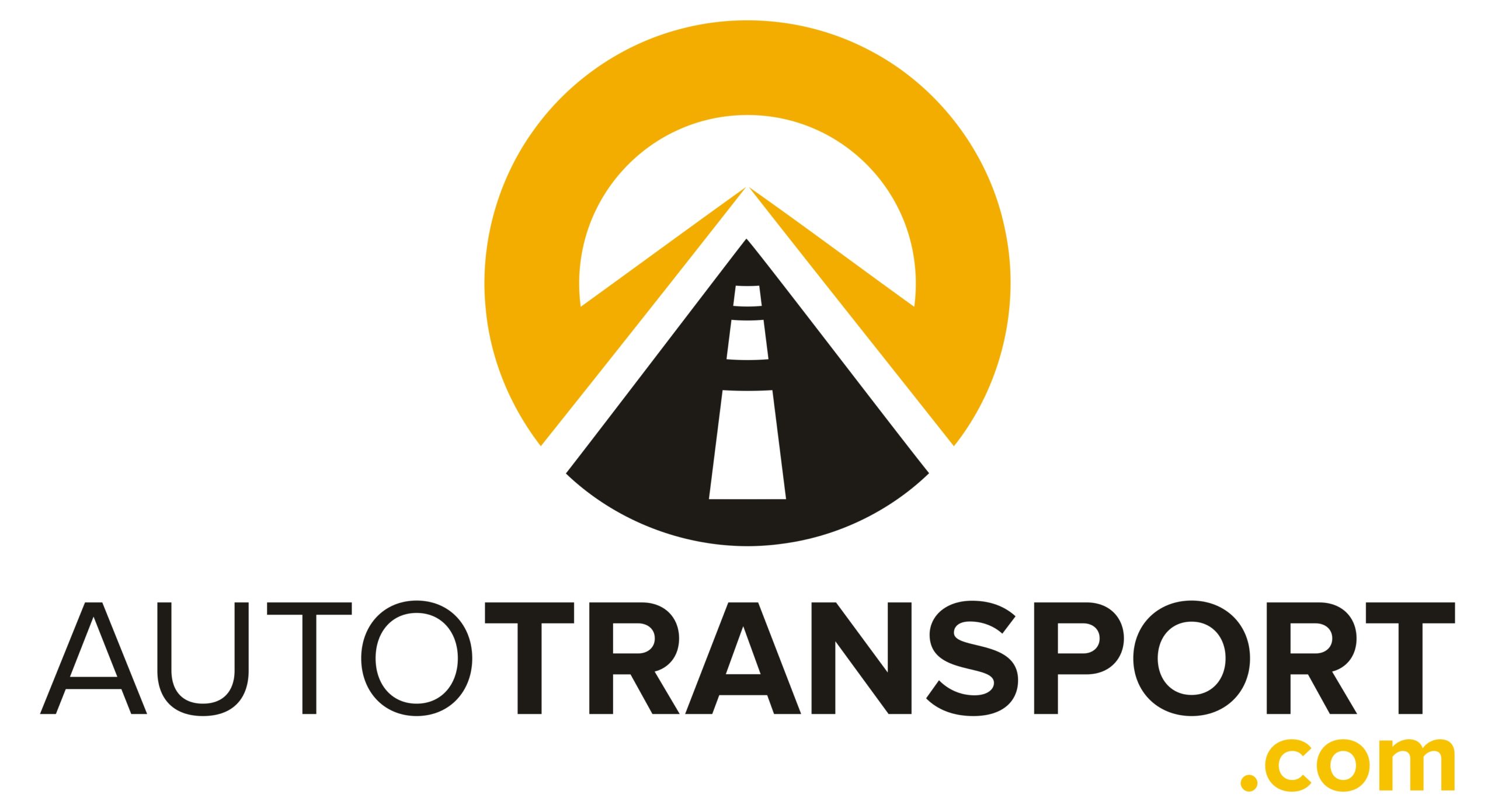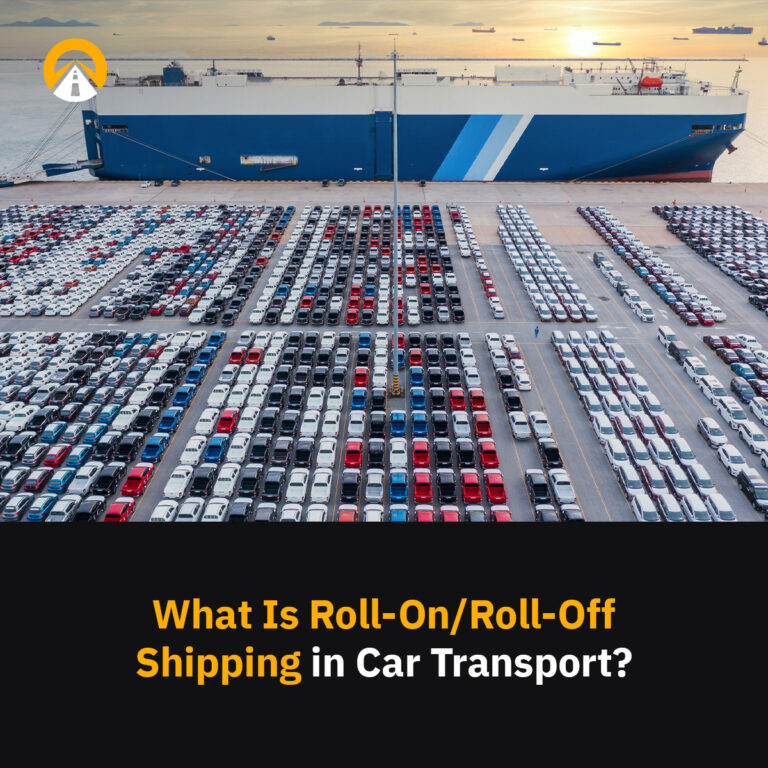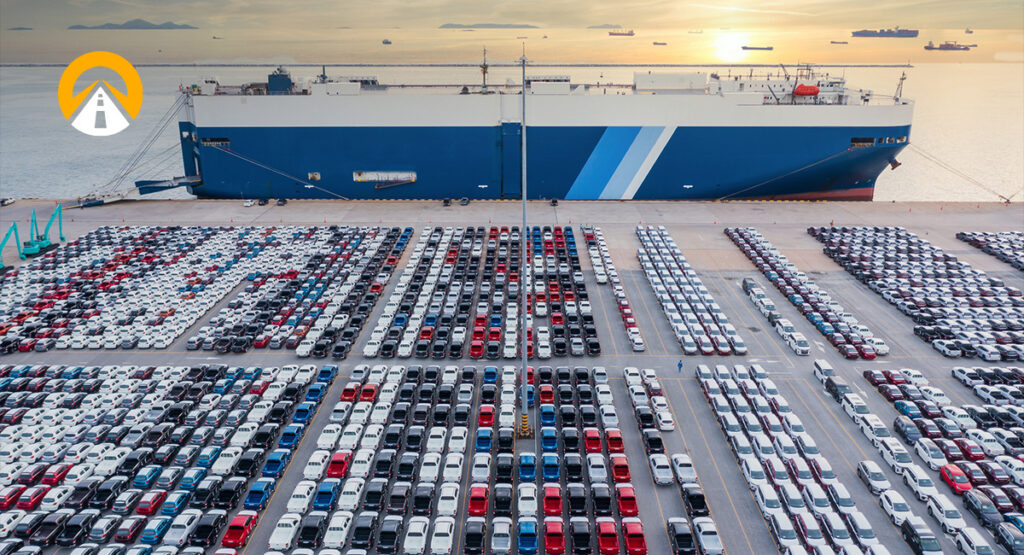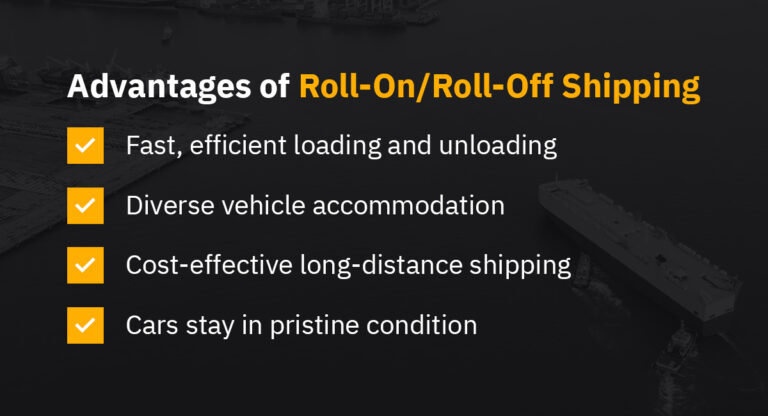Roll-on/roll-off (Ro-Ro) ships are enclosed maritime vessels that transport vehicles from one port to another. Unlike open-air container ships, they keep cars inside with sophisticated ventilation, security and stabilization systems.
If you need to safely ship your vehicle over water, Ro-Ro shipping may be your more efficient and cost-effective option.


Roll-on/roll-off ships are designed with rolling loads in mind. Instead of loading cars into containers and lifting them with cranes, known as lift-on lift-off, workers can simply drive vehicles onboard the Ro-Ro ship and secure them in place. Inside, cars are safe from weather fluctuations while the ship completes its journey.
Each ship has one or more heavy-duty hydraulic ramps that professional drivers use to move vehicles from the dock’s paved working area or apron to the deck. Ramps can often adjust to accommodate different port heights, tidal conditions and the ship’s movement.
Many Ro-Ro ships feature multiple decks connected by internal ramps like a massive floating multistorey parking garage. Crew can adjust the decks’ heights to fit the specific number and type of vehicles awaiting transport. Drivers can easily maneuver vehicles throughout the ship using these adjustable decks and ramps.
Vehicles begin their journey at the departure port. From there, they go through inspection, loading, securing and transportation before safely arriving at their destination port. Each of the following steps requires great care to keep the cars in excellent condition:

Transporting your car in a Ro-Ro shipment comes with many benefits, including the following:
Shipping roll-on/roll-off loads come with a handful of challenges, including:
Limited Time Offer
When time is of the essence, our Expedited Transport Service ensure your vehicle gets where it needs to go – quickly sand safely. Whether you’re facing a tight deadline, unexpected move, or just want your car delivered ASAP, we’ve got you covered.
Roll-on/roll-off ships can transport virtually anything on wheels, from small personal vehicles to massive industrial equipment. There are various types of Ro-Ro ships, each best suited to different customer needs and preferences.
Container Roll-On/Roll-Off Vessels (Con-Ro)
Con-Ro ships offer an impressive carrying capacity, combining container storage on upper decks with vehicle decks below. These versatile carriers handle standard shipping containers alongside commercial trucks, construction machinery, agricultural equipment and industrial vehicles on rolling platforms.
Pure Car Carriers (PCC)
PCCs feature multiple decks exclusively for automobiles, with medium to large capacity. They primarily transport new passenger vehicles, luxury and electric cars, smaller vehicles like motorcycles, rental fleets, classic automobiles and small commercial vans. Vehicles need proper preparation for transport, including functional brakes, specific fuel levels and deactivated alarms.
Pure Car and Truck Carriers (PCTC)
PCTCs are enhanced versions of PCCs with higher decks and stronger ramps, offering larger capacity for diverse vehicle types. They accommodate standard cars, larger haulers like semi-trucks, transit buses, recreation vehicles (RVs) like motorhomes and campervans, construction equipment like excavators and bulldozers, agricultural machinery, military vehicles and emergency response units.
Roll-On/Roll-Off Passenger (Ro-Pax) Vessel
Ro-Pax vessels, or car ferries, combine vehicle transport with passenger service on shorter routes. Despite having the smallest vehicle capacity, they efficiently handle personal cars, tourist coaches, delivery vans, motorcycles, bicycles and camping vehicles while providing passenger accommodations. They’re essential for coastal and inter-island transportation.
Each cross-country vehicle transport method offers distinct advantages, balancing cost, speed, protection and accessibility to serve different needs in the global logistics chain
Roll-On/Roll-Off Shipping
Ro-Ro shipping can be a highly economical maritime option for United States ports. They excel most along shipping routes where multiple vehicles need transport. This method keeps costs low through efficient loading processes and minimal handling requirements, reducing insurance rates. Ro-Ro shipping effectively serves commercial and private customers, offering reliable transportation for most vehicle types.
Rates vary among Ro-Ro vessel types based on their features. PCCs offer the most competitive rates for standard vehicles, while PCTCs command higher rates due to their reinforced decks and unique handling equipment. Con-Ro vessels typically charge premium rates as they combine container and vehicle capabilities.
Container Shipping
In the United States, container shipping costs can often exceed that of Ro-Ro, with prices varying significantly between shared and exclusive containers. Workers must load vehicles into containers and take them out at loading stations, known as “stuffing and stripping.” The containers must then wait for crane availability at each port, adding time and complexity.
Air Carriage
Air carriage is excellent for time-critical deliveries. However, shipping heavy loads by air carrier costs more than by sea, making it practical only when you need immediate delivery. While it offers the fastest shipping times, air carriage’s limited vehicle capacity and high expenses restrict its use to exceptional circumstances.
Auto Transport Services
Auto transport services provide the standard solution for domestic and regional vehicle movement, particularly for distances under 500 miles. These services combine cost-effectiveness with door-to-door delivery options and flexible scheduling throughout inland areas. Auto transport carriers deliver reliable service across established networks for single vehicles and locations away from ports.
Now that you understand the Ro-Ro shipping process, it’s time to plan your vehicle’s next journey. From securing your initial quote to tracking your vehicle’s progress across the ocean, Autotransport.com’s car shipping process prioritizes your convenience at every step.
Request your complimentary quote to transport your car safely and efficiently today.
